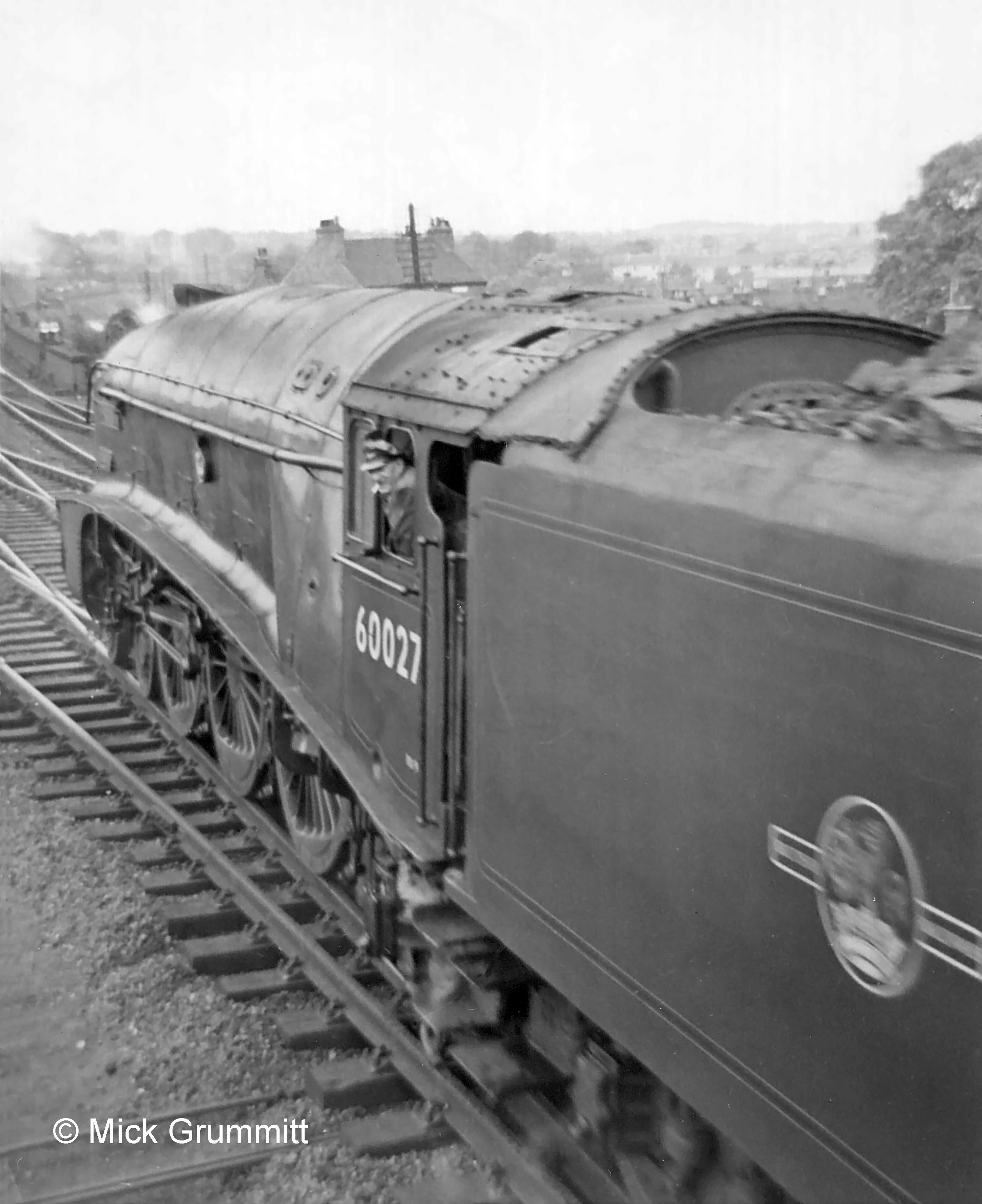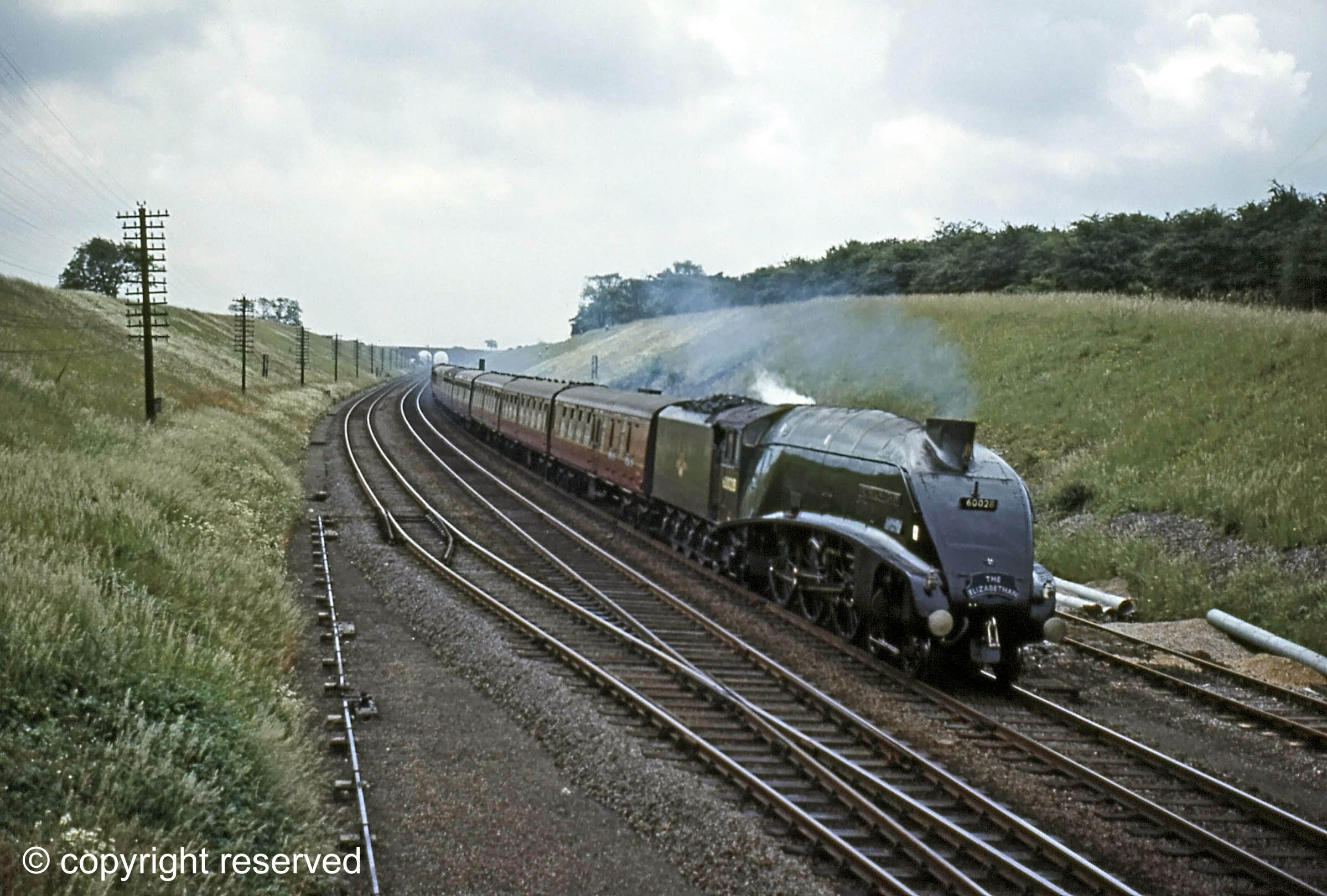by John Clayson
In 1953 British Railways gave the title The Elizabethan to the UK's most prestigious summer season train to mark the coronation of our new monarch, HM Queen Elizabeth II. Britain was eagerly anticipating the promise of a new Elizabethan era as people looked to shake off the privations of the first half of the 20th century, including two world wars and 'the hungry thirties'.
Covering the 393 miles between London King's Cross and Edinburgh Waverley stations, The Elizabethan was the world's longest regular non-stop express passenger service. From Monday 29th June 1953 until 9th September 1962 an Elizabethan train departed from each end of the route on every weekday morning during summer timetable periods and, initially, on Saturdays too.
For all but the final season there was always a sparkling A4 ‘streamliner’ on the front. These locomotives were meticulously maintained at London's King's Cross and Edinburgh's Haymarket motive power depots, and their reliable and punctual operation set the standard. In summer 1962 'Deltic' diesel electric locomotives took over and, perhaps surprisingly, this meant the end of the train's non-stop status - as will be explained below.
The Elizabethan passed through Grantham at about 11.15am northbound from London, and at around 2.30pm out of Edinburgh, turning the heads of railway staff, passengers waiting on the platforms and spotters alike.
Tracks through Grantham wishes to mark the close of our second Elizabethan era by gathering a selection of photographs of The Elizabethan express in the Grantham area during the first decade of what was to be an unprecedented and remarkable seventy-year period.
A picture that helped to launch a career
"The train would have been doing about 60 mph. and my camera only had a shutter speed of 1/40th of a second. I clicked as it sped past. Remarkably, the picture caught the engine reflected in the Gresley teak coaches of a London-bound express. It was almost sharp and very atmospheric. The result was one of set that got me a place in Leicester College of Art and probably influenced me more than any other photograph in deciding to spend my life as a photographer."
Photograph © Roger Bamber: 14th June 1958
Stopping for a Refill
A steam locomotive's coal supply would last the whole journey of nearly 400 miles but that wasn't the case with the water, which had to be topped up on the move several times en route from long water troughs laid between the rails. There was a scoop beneath the tender which dipped into the water.
If a 'dip' at the water troughs was unsuccessful there might be sufficient in reserve to reach the next set of troughs. If that wasn't the case, a stop would have to be made at a station where there was a water column at the platform end. If that was to be Grantham the driver would indicate his intention to stop there for water by sounding a special whistle code at Corby Station signal box, nine miles south. The signalman there would relay the message through to Grantham North box (see our page Whistles, Whistles and More Whistles).

On this occasion the crew stopped for water at Grantham because they'd had a ‘poor dip’ at Langley troughs near Stevenage (probably because the troughs hadn’t had time to refill fully after a previous train). Then, the second set of troughs at Werrington, north of Peterborough, were out of use for maintenance. If the next troughs at Muskham, near Newark, should happen to be low as well there was a risk that their tender would run dry. So a stop had become essential.
Mick remembers that the unexpected arrival of a passenger train at the platform when none was due caused a bit of a panic among the station staff.
Photograph taken by Mick Grummitt
Speeding South on a Saturday
Photograph taken by Tom Boustead
Near the Summit

Photograph taken by Noel Ingram.
Over the Top

Photograph taken by Noel Ingram.
Down the Bank
Photograph by Noel Ingram.
Up the Bank
Photograph by Noel Ingram.
Summer 1962: the 'Deltics' take over
The London to Edinburgh route was too long for one locomotive crew to be continually in charge. When the non-stop Elizabethan train began in 1953 it was hauled by steam locomotives equipped with corridor tenders, so that a relief crew, travelling in the leading compartment of the first coach, could walk through to the cab and take over at the half-way point. This arrangement had been in place since 1928 when regular non-stop operation first took place.
Unlike their steam predecessors, the Deltic locomotives had no provision for a corridor connection to the train. It had been hoped by British Railways that the relief crew would travel the first half of the journey in the rear cab and walk through to the front to take over at the usual half-way point, thus enabling a non-stop service to continue. However, a Deltic's cab was a very noisy, enclosed environment, being adjacent to two powerful diesel engines and their equipment. While London-based crews were prepared to pass the entire six-hour journey on board the locomotive, their Scottish colleagues were not so amenable to the idea. BR's medical officers agreed that it was inadvisable to use the rear cab as a rest area, so a brief and, initially, unadvertised stop was introduced at Newcastle for crew changing. It was soon decided to use this as an additional pick-up point, and the Newcastle stop was added to the public timetable from 16th July 1962. The train was officially no longer a non-stop service.
Photograph taken by Cedric Clayson
More on The Elizabethan
The book What's on the 'LIzzie'? is a comprehensive guide to The Elizabethan during its steam-hauled period, 1953-61. Published in 2010 by Lineside Twentyfive, it was researched and written by John Aylard, Tommy Knox and David Percival, ISBN 978-0-9566762-0-7.
Watch the celebrated 20-minute film Elizabethan Express released in 1954:

A fitting tribute to our illustrious monarch and a famous express. Thanks for the memories.
Thankyou Richard.
John Clayson
Thank you John for this lovely tribute.
Thankyou Kevin.
John Clayson
I enjoyed this video so much as it brought back happy memories of my wonderful experience on this train when I was almost ten years old.
To this day I retain fond memories of Mum, Dad and myself on our journey from Edinburgh to Kings Cross.
A few years ago the train repeated the journey at our late Queen Elizabeth's Jubilee celebrations and I was delighted that the organisers borrowed my original menu and used part of it as a basis for their menu for the occasion.
Hello Ann,
Thank you very much for getting in touch to recall your journey on board The Elizabethan. A trip by express train back then was a memorable adventure which I don't think can quite be matched in more modern times. The film Elizabethan Express certainly captures the thrill of high speed travel very well, and we're pleased to have brought that to you on our website.
In 1977 the East Coast Main Line celebrated the Queen's Silver Jubilee with special weekday services between London and Edinburgh. There's a photograph of the inaugural northbound train on another Tracks through Grantham website page here (scroll down to the second photograph under the heading '12. Belton').
John Clayson